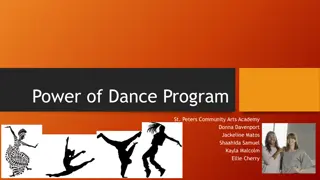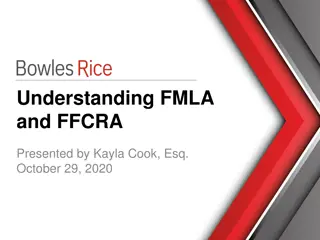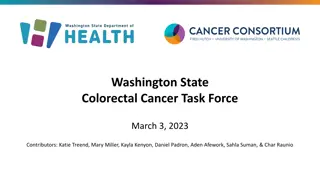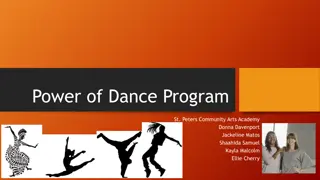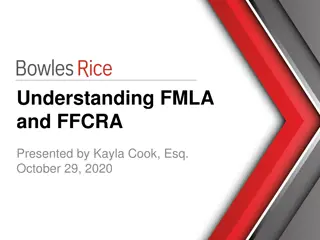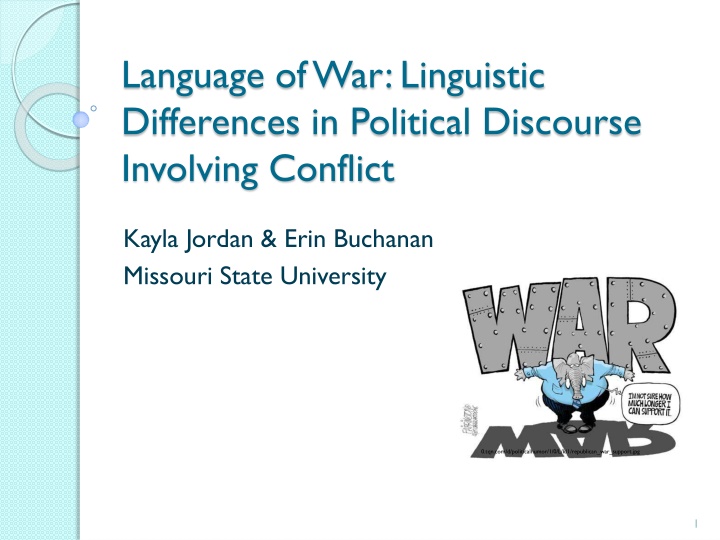
Political Discourse in Conflict: Linguistic Variances and Manipulation
Explore the fascinating realm of linguistic nuances in political discussions involving conflict, analyzing the use of euphemisms, hate speech, and rhetorical strategies to justify warfare. Discover how language reflects power dynamics and emotional tones before, during, and after wars through a variety of studies and research findings.
Download Presentation

Please find below an Image/Link to download the presentation.
The content on the website is provided AS IS for your information and personal use only. It may not be sold, licensed, or shared on other websites without obtaining consent from the author. If you encounter any issues during the download, it is possible that the publisher has removed the file from their server.
You are allowed to download the files provided on this website for personal or commercial use, subject to the condition that they are used lawfully. All files are the property of their respective owners.
The content on the website is provided AS IS for your information and personal use only. It may not be sold, licensed, or shared on other websites without obtaining consent from the author.
E N D
Presentation Transcript
Language of War: Linguistic Differences in Political Discourse Involving Conflict Kayla Jordan & Erin Buchanan Missouri State University 0.tqn.com/d/politicalhumor/1/0/L/k/1/republican_war_support.jpg 1
War Language Us versus Them: Use of euphemisms (e.g. liberation v. invasion) and hate speech (Bugarski, 2000) Use of rhetoric and political myths to legitimize war on terror (Esch, 2010) Exceptionalism, Civilizing Mission Rise of militarist language (e.g. warrior) with Iraq War (Babones, 2012) 2
Hogenraad, 2005 Increased use of power words (e.g. legitimate, terrorize) with a decreased use of affiliation words (e.g. family, thoughtful) tend to precede war 3
Slatcher, Chung, Pennebaker, & Stone, 2007 Study of 04 presidential campaign: Democrats used more depressive language; Republicans more presidential language Depressive language Greater: 1st-person singular words, physical words, negative emotion words Less: positive emotion words Presidential language More: articles, prepositions, positive emotions and big words 4
Cohn, Mehl, & Pennebaker, 2004 Study of blogs following 9-11 Two weeks following increased: Negative, Social, Cognitive processing (organization and understanding), and Distant (abstract, impersonal, and rational tone) Distancing persisted. Cognitive processing declined 5
Tausczik and Pennebaker (2010) Style words reflect how people are communicating (p.29) Personal pronouns and verb tense linked to attentional focus Social words linked to status and group cohesion Cognitive complexity linked to exclusive words, conjunctions, prepositions, cognitive mechanisms, and longer words 6
LIWC Language Inquiry and Word Count (LIWC; Pennebaker, Booth, & Francis, 2007) Text analysis program 82 language categories Fails to recognize context and sarcasm (Pennebaker, 2011) 7
Words In Category Alpha: Binary/Raw Words In Category Alpha: Binary/Raw Category Examples Category Cognitive Mechanisms Examples Pronouns Insight Causation Discrepancy Tentative Certainty Inhibition 1st pers singular 1st pers plural 2nd person 3rd pers singular 3rd pers plural Verbs I, me, mine We, us, our You, your, thou She, her, him They, their, they d 12 12 20 17 10 .62/.44 .66/.47 .73/.34 .75/.52 .50/.36 think, know, consider because, effect, hence should, would, could maybe, perhaps, guess always, never block, constrain, stop 195 108 76 155 83 111 .94/.51 .88/.26 .80/.28 .87/.13 .85/.29 .91/.20 Inclusive Exclusive Relativity Past tense Present tense Future tense Went, ran, had Is, does, hear Will, gonna 145 169 48 .94/.75 .91/.74 .75/.02 And, with, include But, without, exclude 18 17 .66/.32 .67/.47 Motion Arrive, car, go 168 .96/.41 Other Space Time Personal Concerns Adverbs Articles Prepositions Very, really, quickly A, an, the To, with, above 69 3 60 .84/.48 .14/.14 .88/.35 Down, in, thin End, until, season 220 239 .96/.44 .94/.58 Work Achievement Money Religion Conjunctions Negations Quantifiers Social processes And, but, whereas No, not, never Few, many, much 28 57 89 .70/.21 .80/.28 .88/.12 Job, majors, xerox Earn, hero, win Audit, cash, owe Altar, church, mosque 327 186 173 159 .91/.69 .93/.37 .90/.53 .91/.53 Death Social Mate, talk, they, child 455 .97/.59 Bury, coffin, kill 62 .86/.40 Positive emotion Negative emotion Love, nice, sweet Hurt, ugly, nasty 406 499 .97/.40 .97/.61 LIWC Categories (http://www.liwc.net/descriptiontable1.php) 8
Purpose We wished to explore the possibility of using this linguistic analysis to predict whether or not war will occur. 9
Hypotheses The best models for predicting support for military action will use pronouns, social words, and emotional words as predictors. The use of third person pronouns will be greater among those that support military action. More positive emotion words will be used in support for military action and more negative for opposition. 10
Sample 1 Congressional Record, speeches in the Senate from 1998 to 2013 (248) U.S. relations with the following countries: Iraq (198), Kosovo (50) Number of US Senators: 92 Number of Speeches by Party Affiliation: Republican (136), Democrat (111) Word count: M = 1757.54, SD = 1427.26, Mdn = 1483.00, Min = 124, Max = 12215 11
Sample 2 Congressional Record, speeches in the House from 1998 to 2013 (458) U.S. relations with the following countries: Iraq (331), Libya (106), Kosovo (32) Number of US Representative: 290 Number of Speeches by Party Affiliation: Republican (211), Democrat (258) Word count: M = 757.54, SD = 1135.55, Mdn = 510, Min = 97, Max = 12165 12
Results Dependent Measures Voting records (Kosovo, Iraq, Libya) Independent Measures Linguistic processes, Pronouns, Verbs, Other function words, Social/emotional words, Cognitive mechanisms, Relativity words, and Personal concerns Multilevel Logistic Regression 13
Results: Senate Determine the need for a nested model Level 1: Nested by Senator Level 2: Nested by Senator and Region Level 3: Nested by Senator, Region, and Party Affiliation p df Deviance LogLik AIC BIC Deviance df Difference Null Model 242 305.02 307.02 Null Nested 151 217.14 -108.57 221.14 228.12 87.88 91 >.05 Model-Level 1 (114.17) Null Nested 149 193.75 -96.87 199.75 210.23 111.27 93 >.05 Model-Level 2 (116.51) Null Nested 147 199.51 -99.75 207.51 221.46 105.51 95 >.05 Model-Level 3 (118.75) 14
Senate Data (Iraq and Kosovo) df Deviance LogLik AIC BIC Deviance Sig RL2 RCS2 RN2 df Difference Linguistic 146 188.01 -94.00 200.01 220.97 5.74 3 .125 .03 .02 .04 Processes Pronouns* 11.25 5 .047 .06 .05 .09 144 182.50 -91.25 198.50 226.34 Verbs 145 186.47 -93.24 200.47 224.92 7.28 4 .123 .04 .03 .05 Other 143 197.58 -98.79 215.58 247.02 3.83 6 1.00 -.02 -.01 -.02 Social/Emotional 146 191.10 -95.55 203.10 224.06 2.65 3 .450 .01 .01 .02 Cognitive 141 191.19 -95.59 213.19 251.61 2.56 8 .959 .01 .01 .02 Mechanisms Relativity 146 190.13 -95.06 202.13 223.09 3.62 3 .305 .02 .01 .02 Personal 144 191.31 -95.65 207.31 235.25 2.44 5 .785 .01 .01 .02 Concerns 15
Pronoun Model SE (95% CI) 95% CI for odds ratio B SE Lower Upper z p Lower Odds Ratio Upper Intercept 11.71 3.57 3.28 0.001 I -0.62 0.50 -1.60 .36 -1.24 0.216 .20 .54 1.44 We -1.21 0.72 -2.61 .20 -1.69 0.092 .07 .30 1.22 You 0.16 1.94 -3.65 3.96 0.08 0.936 .03 1.17 52.39 She/He 1.55 1.79 0.073 4.72 0.87 -.15 3.25 .86 25.73 They 0.49 1.11 -1.68 2.66 0.044 0.657 .19 1.63 14.30 16
Results: House of Representatives Determine the need for a nested model Level 1: Nested by Representative Level 2: Nested by Representative and Region Level 3: Nested by Representative, Region, and Party Affiliation df Deviance LogLik AIC BIC Deviance df Difference Null Model 454 629.39 631.39 Null Nested 165 564.91 -282.46 568.91 577.15 61.48 289 Model-Level 1 Null Nested 162 564.12 -282.06 570.12 582.49 65.27 286 Model-Level 2 Null Nested 160 527.97 -263.98 535.97 552.45 101.42 284 Model-Level 3 17
House Data (Iraq, Libya, & Kosovo) df Deviance LogLik AIC BIC Deviance Sig RL2 RCS2 RN2 df Difference Linguistic Processes 157 527.30 -263.65 541.30 570.14 .67 3 .880 <.01 <.01 <.01 Pronouns 32.28 5 <.001 .06 .07 .10 155 496.68 -247.84 513.68 550.77 Verbs 156 521.73 -260.86 537.73 570.69 6.24 4 .182 .01 .01 .01 Other 44.73 6 <.001 .08 .09 .13 154 483.24 -241.62 503.24 544.44 Social/Emotional 9.55 3 .023 .02 .02 .03 157 518.42 -259.21 532.42 561.26 Cognitive 21.18 8 .007 .04 .05 .07 152 506.79 -253.39 530.79 580.23 Mechanisms Relativity 21.96 3 <.001 .04 .05 .07 157 506.01 -253.00 520.01 548.85 Personal Concerns 25.38 5 <.001 .05 .05 .07 155 502.58 -251.29 520.58 557.67 18
Pronoun Model SE (95% CI) 95% CI for odds ratio B SE Lower Upper z p Lower Odds Ratio Upper Intercept -.13 1.09 -2.27 2.00 -.12 .902 I -.005 .14 -.27 .26 -.03 .973 .76 1.00 1.30 We -.12 .11 -.34 .10 -1.06 .288 .71 .89 1.11 You .27 .54 -.79 1.33 .50 .615 .45 1.31 3.79 She/He 1.26 5.10 <.001 3.52 .25 .77 1.74 2.17 5.70 They .27 .26 -.25 .78 1.03 .305 .78 1.31 2.19 19
Discussion Pronouns Increased third-person singular pronouns, increased probability of support of war Emphasis on eliminating evil dictators wingsoverscotland.com/wp-content/uploads/2012/02/salmondbingo1.jpg 20
Limitations Defining support for war Nature of political speeches 21
Future Directions More language samples Moral Foundations Theory Perceived violations of moral foundations could be one possible cause of intergroup conflict (Kesebir & Pyszczynski, 2011) Hypothesize correlations between use of moral words and the use of words found to be important in the first study in predicting support for war 22
References Babones, S. (2012). The Revival of Militarist Language in the United States.Peace Review,24(1), 84-91. doi:10.1080/10402659.2012.651030 Bugarski, R. (2000). Discourses of War and Peace.Folia Linguistica,34(3/4), 129-145. Cohn, M. A., Mehl, M. R., & Pennebaker, J. W. (2004). Linguistic Markers of Psychological Change Surrounding September 11, 2001.Psychological Science (Wiley-Blackwell), 15(10), 687-693. doi:10.1111/j.0956-7976.2004.00741.x Esch, J. (2010). Legitimizing the War on Terror : Political Myth in Official-Level Rhetoric.Political Psychology,31(3), 357-391. doi:10.1111/j.1467-9221.2010.00762.x Hogenraad, R. (2005). What the Words of War Can Tell Us About the Risk of War.Peace And Conflict: Journal Of Peace Psychology,11(2), 137-151. doi:10.1207/s15327949pac1102_2 Pennebaker, J.W. (2011). The secret life of pronouns: What our words say about us. New York: Bloomsbury Press. Pennebaker, J.W., Booth, R.J., & Francis, M.E. (2007). Linguistic Inquiry and Word Count: LIWC 2007. Austin, TX: LIWC (www.liwc.net). Slatcher, R. B., Chung, C. K., Pennebaker, J. W., & Stone, L. D. (2007). Winning words: Individual differences in linguistic style among U.S. presidential and vice presidential candidates.Journal Of Research In Personality,41(1), 63-75. doi:10.1016/j.jrp.2006.01.006 Tausczik, Y. R., & Pennebaker, J. W. (2010). The Psychological Meaning of Words: LIWC and Computerized Text Analysis Methods.Journal Of Language & Social Psychology,29(1), 24-54. doi:10.1177/0261927X09351676 23



